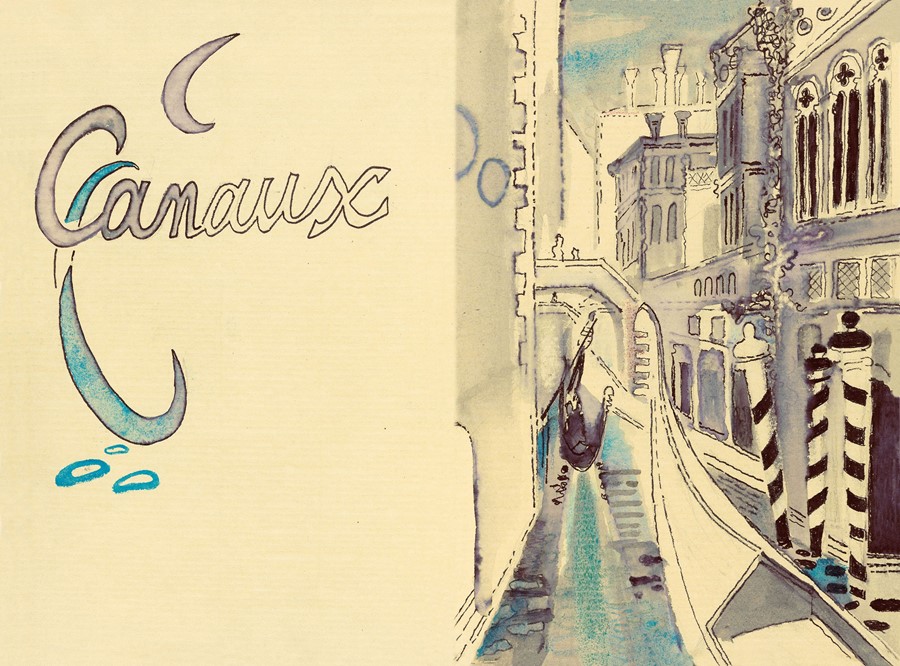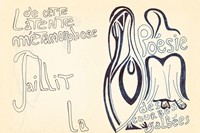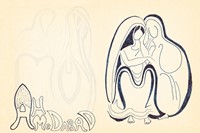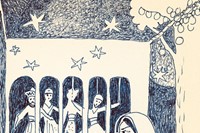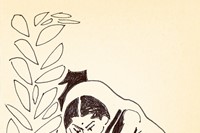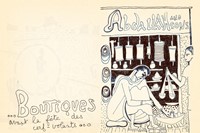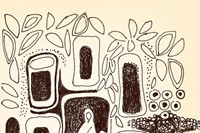The painter and one-time lover and muse to Picasso publishes three intimate visual diaries documenting her visits to far-flung lands
Nowadays, with iPhone cameras and Instagram stories a mere tap away, creating a visual diary of your day to day existence has never been easier, lazier or (arguably) less artful. Which is what makes Taschen’s new three-part publication of French artist Françoise Gilot’s travel sketchbooks – made during visits to Venice, India and Senegal with her second husband, the American medical researcher Jonas Salk – so particularly enticing. Gilot is perhaps best known as the lover and muse of Pablo Picasso, whom she met while living in Paris at the age of 21, going on to bear two of his children. She left him after ten years (allegedly the only woman ever to do so), and wrote vividly about their time together in her best-selling memoirs Life with Picasso (1964). But Gilot has always been an exceptionally talented artist in her own right, and is undergoing somewhat of a renaissance of late, her paintings – vibrant and evocative studies in colour, form and abstraction of the natural world – selling for increasingly large sums.
These three sketchbooks, made between 1974 and 1981, are the closest that Gilot herself has come to keeping a diary. They were created during her sojourns, but were sketched from memory while on the move – during turbulent plane journeys, lengthy car rides or from the comfort of hotel rooms – rather than from life. The first is a glorious homage to Venice, a city that Gilot had visited since childhood, and clearly adores. It merges watercolour drawings – of the canals, the gondolas and their striped mooring poles, the grand palazzos, the cafes and landmarks like St Mark’s Square – with poetic musings on the city’s storied past. She writes, in beautiful script, of the painters it has spawned, from Titian and Tintoretto to Veronese (sometimes accompanied by doodles after their work); the craftsmen it nourishes; the writers and lovers it has inspired – one sketch shows a figure leaping from a palazzo window into the canal, likely a nod to Lord Byron, that most famous romancer, who is said to have prompted his housekeeper to hurl herself into the water during a lover’s tiff.
In India, Gilot’s attention is captured far more specifically by the local women she encounters, and the saris in which they wrap themselves, which she observes are both shielding and visually splendid. “The cloth is a cocoon,” she writes, “and in this latent metamorphosis lies the magic of the curved line.” These lines she explores with fluid abandon in shapely, spellbinding drawings realised mainly in black and white. Cows, election posters, spiralling Islamic architecture and bare feet on the earthy ground reveal the other elements of the bustling country that captured her imagination. In Senegal, meanwhile, Gilot makes no written observations, instead demonstrating her clear fascination with the country’s myriad colours, shapes and people (again mostly women) through remarkably rendered watercolours and sketches – some entire painted scenes in vibrant hues, others a single, abstracted figure rendered in black pen.
These wonderful works of art not only serve as intimate and evocative impressions of Gilot’s adventures but also offer an insightful glimpse into her singular artistic process and perception. It was for this reason that Gilot’s longtime friend, the actress and playwright, Thérèse Crémieux, encouraged Gilot – now 96 – to publish these unique time capsules, decades after their creation. The covetable set of books includes a pamphlet featuring an interview between Gilot and Crémieux, in which the artist sheds light on the synesthetic interplay of sounds and colour in her work, the purpose of sketching in her practice and why she draws “to forget”. Read an exclusive except from their candid conversation below.
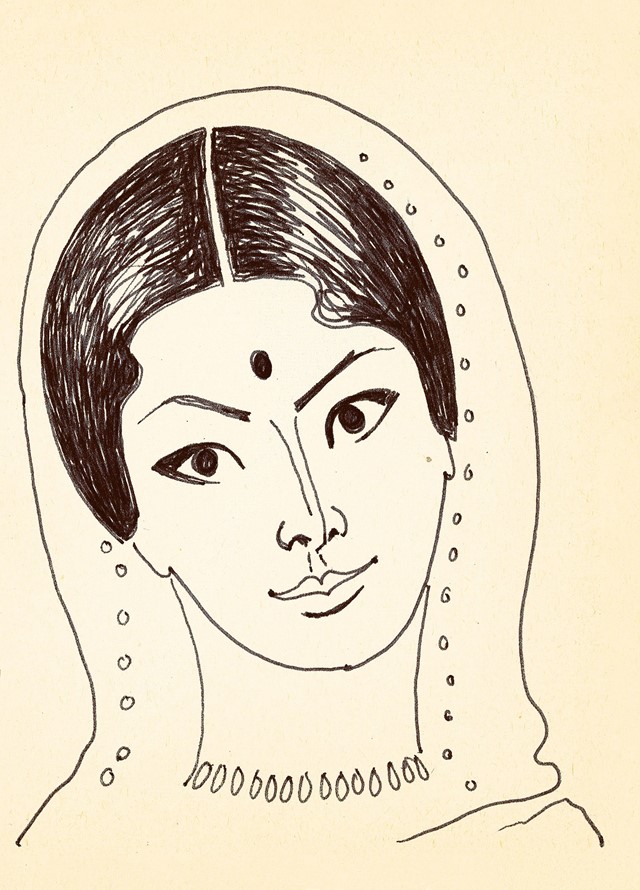
Françoise Gilot: For me it’s a habit, when I’m not in my studio I like taking notes. When I travel – like lots of other painters – I always have a sketchbook with me. Even when I was very young, I enjoyed drawing in the metro. The fact is that I began to work at it when I first began to think about becoming an artist. I have had this will since I was ten. I did learn how to draw nudes, but drawing well was never an end in itself. For me, the point was to familiarise myself with the forms, to acquire a sort of understanding of muscles and anatomy. It’s strange, because I think I draw quite well, but I just saw that accomplishment as a path to ease the way to art and to painting.
Thérèse Crémieux: To make it easier, on the technical front?
FG: It’s a bit like the Japanese; they tell you that you have to draw 10,000 things before you do even one good drawing. So I have more or less done 10,000 things; for me it was a key to art although the time I spent with my music teacher, who taught me music composition, meant a lot to me.
TC: In your work as an artist?
FG: Yes. I should add that my inspiration always comes from something I hear in my left ear, colors and words. That’s always how it begins. I then translate it into a drawing or a painting, according to my interest in it. Sounds can be interchangeable with colors. The starting point for this is rather amusing. My mother, who was very musical, wanted me to play the piano. I love music, but I am useless when it comes to anything else than painting or drawing. As I wished to please my mother, who could hear the lesson from another floor in our house, I thought she would be better off listening to my teacher playing the piano than to me, and during the second half of the session I would learn theory of music composition.
That’s the only thing I have ever learnt as far as music is concerned and that’s why music became part of my painting.
TC: That’s really interesting. And so it helped you with the painting?
FG: Yes, absolutely. For example, the fact that I mix words – that is, sounds – with colours. For me that’s very important.
TC: What is the connection between drawing and painting?
FG: It’s not at all the same thing. There isn’t much of a link. It’s completely different. Everyone says that drawing is useful for painting and yet perhaps it’s not all that true. Line includes volume, it includes inside and out. You mustn’t forget that when you draw the line, you determine not only the line itself but what happens on either side of the line. The white of the page becomes space.
TC: How has drawing manifested itself in your work? How has the drawing work you have done in your sketchbooks affected your work as a painter?
FG: In my paintings, I work mainly in series, I can work for a year or two on one. So if I have something else in mind, it is better if I free myself of it in my sketchbooks. It’s probably things I prefer to keep out of my work because they’d take me too far from my principal domain: form and colour. I’m more abstract when I paint than when I draw. Drawing allows me to express my feelings – if I have any – and to get rid of these images. I draw to forget.
TC: So these sketchbooks are not preparatory, they allow you to jot down subjects at the fringes of your main interest as an artist?
FG: Yes, it’s like comparing a speech with writing a book. I do think the drawings are interesting because they’re spontaneous and, in some cases, they’re like a shortcut between one thing and another; that’s why I think it’s interesting for the viewer. These sketchbooks reveal my work methods; in a way, this means allowing the viewer to see something that’s normally for my eyes only. These little books are complete in themselves. I made them, and then, once I’d made them, I was free. For me these little books are a step toward freedom.

Françoise Gilot. Three Travel Sketchbooks: Venice, India, Senegal is out now, published by Taschen.
